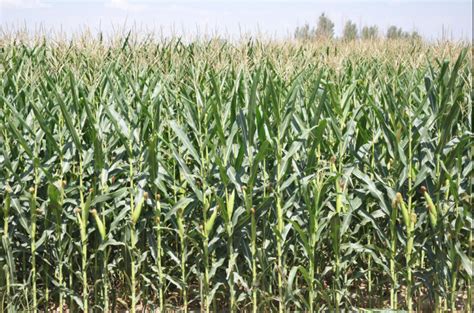When the wind picks up at the foot of the Rockies, there are those who believe they can hear the future. At the National Renewable Energy Laboratory, making alternative power sources competitive with fossil fuels has been a mission since the energy crisis of the 1970s. Scientists worked to create solar cells far more efficient than those currently available to homeowners. They believe the market for this technology is about to come of age. When it was installed, this was believed to be the largest residential solar-electric system in the United States. The homeowner is actually selling electricity back to the power company. "I also feel good because I've always been committed about the environment and doing something and we have to start as individuals to do things."
當(dāng)落基山腳下起風(fēng)時,有些人相信他們能聽到未來。自上世紀(jì)70年代的能源危機以來,美國國家可再生能源實驗室(National Renewable Energy Laboratory)一直致力于制造可與化石燃料媲美的替代能源。科學(xué)家們努力制造一種新的太陽能電池,效率遠(yuǎn)遠(yuǎn)高于目前的家用太陽能電池。他們相信這種技術(shù)的市場即將成熟。安裝完成后,可以認(rèn)為它是美國最大的家用太陽能電力系統(tǒng)。房主實際上是在把電賣給電力公司。“我也感覺很好,因為我一直致力于環(huán)保,切實做一些事情,我們必須從個人做起。”
 But individuals can do only so much. Researchers here say, for renewable energy to really make a difference, it has to be on a large scale. There hasn't been any great sense of urgency for finding energy alternatives. For decades, low gas prices have kept Americans in their cars, usually alone. But a jumping gas prices often spotlights the search for something else to keep all those cars going.
But individuals can do only so much. Researchers here say, for renewable energy to really make a difference, it has to be on a large scale. There hasn't been any great sense of urgency for finding energy alternatives. For decades, low gas prices have kept Americans in their cars, usually alone. But a jumping gas prices often spotlights the search for something else to keep all those cars going.
但個人只能做這么多。這里的研究人員說,要想讓可再生能源真正發(fā)揮作用,就必須大規(guī)模使用。尋找替代能源的緊迫感目前還沒有出現(xiàn)。幾十年來,因為油價較低,美國經(jīng)常開車出門,而且是每人開一輛車。但汽油價格的不斷上漲,促使人們尋找其他東西作為現(xiàn)在這些汽車的燃料。
What's in there now is a material that looks like straw or, it's actually the material that farmers just leave sitting on the ground after they go through when they harvest corn. We are trying to get farmers to collect this material so that we can run it through conversion technology to make new liquid fuels.
現(xiàn)在有一種看起來像稻草的材料,實際上是農(nóng)民在收割玉米后留在地上的東西。我們正試圖讓農(nóng)民收集這種材料,這樣我們就可以通過轉(zhuǎn)化技術(shù)將其轉(zhuǎn)化生產(chǎn)新的液體燃料。
Since the energy crisis of the 70s, some farmers have been diverting part of their grain harvest to make a fuel called ethanol.
自上世紀(jì)70年代的能源危機以來,一些農(nóng)民一直在用他們的部分糧食收成生產(chǎn)一種叫做乙醇的燃料。
But the emphasis now is on the stalks and stubble left on the ground after the harvest. "The cellulose attained here that actually is made up of sugars, is something that they can turn into ethanol on the same way that they're currently taking the corn grain that having it turned into fuel grade ethanol."
但現(xiàn)在的重點是收獲后留在地上的玉米根。“這里獲得的纖維素實際上是由糖組成的,這種纖維素可以采用他們現(xiàn)在把玉米粒轉(zhuǎn)化成燃料級乙醇的方式轉(zhuǎn)化為乙醇。”
The National Renewable Energy Lab has a plant that converts harvest leftovers and just about anything else into fuel. Proving that renewable energy technology is viable remains a struggle, at least in America. Wind turbines were pioneered in the United States, but countries in Europe use them to supply more meaningful amounts of power. With the current energy situation labeled a crisis, the urgency for finding reliable alternatives to fossil fuels may have arrived. And for renewable energy, the future may be now.
美國國家可再生能源實驗室(National Renewable Energy Lab)有一臺設(shè)備,可以把收獲的剩余物和幾乎任何其他東西轉(zhuǎn)化為燃料。至少在美國,證明可再生能源技術(shù)是可行的仍然是一個難題。美國率先使用風(fēng)力渦輪機,但歐洲國家使用它們來提供更多電力,十分有意義。在當(dāng)前能源形勢出現(xiàn)危機的情況下,必須馬上尋找可靠的化石燃料替代品。可再生能源來的未來,可能就在現(xiàn)在。
 But individuals can do only so much. Researchers here say, for renewable energy to really make a difference, it has to be on a large scale. There hasn't been any great sense of urgency for finding energy alternatives. For decades, low gas prices have kept Americans in their cars, usually alone. But a jumping gas prices often spotlights the search for something else to keep all those cars going.
But individuals can do only so much. Researchers here say, for renewable energy to really make a difference, it has to be on a large scale. There hasn't been any great sense of urgency for finding energy alternatives. For decades, low gas prices have kept Americans in their cars, usually alone. But a jumping gas prices often spotlights the search for something else to keep all those cars going.










